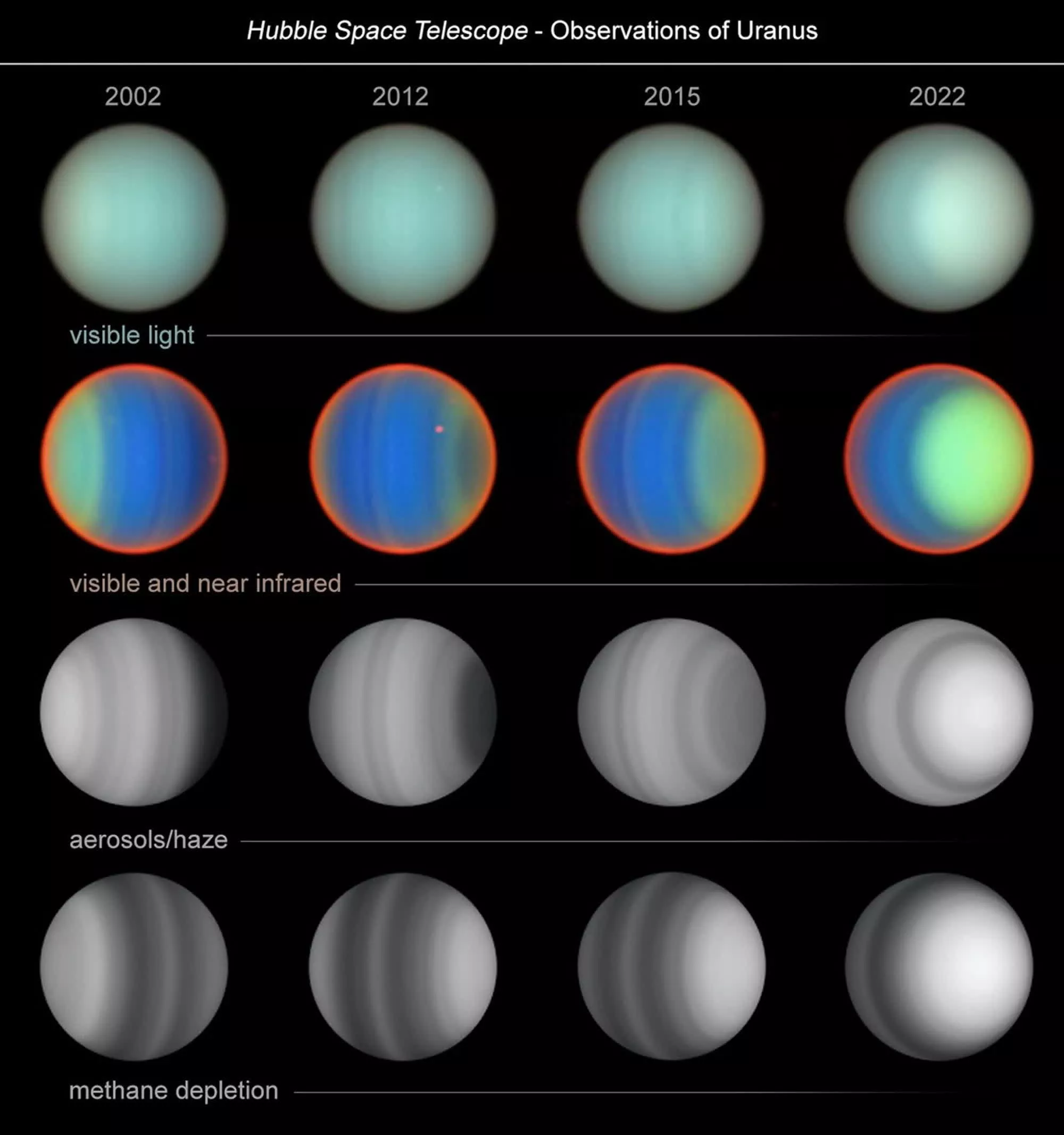Otherwordly Seasons: Uranus, the seventh planet in the Solar System, is an "ice giant" that travels around the Sun while tipped on its side. NASA describes the planet as a mysterious and mostly unknown world, though new research tried to examine some of its planetary features in unprecedented detail.
An international team used 20 years of data and photos taken by the Hubble Space Telescope to study Uranus' atmosphere and its seasonal changes. The icy world was portrayed for the first time in 1986, during a Voyager 2 flyby. We have known about Uranus' characteristic cyan color since then, but the Hubble data can now provide a closer picture of the planet's atmospheric composition and how it is affected by sunlight.
A team of astronomers led by Erich Karkoschka (University of Arizona), Larry Sromovsky and Pat Fry (University of Wisconsin), used the Space Telescope Imaging Spectrograph on the Hubble telescope to chronicle seasonal changes between 2002 and 2022. Uranus' atmosphere is mostly made up of hydrogen and helium, the researchers confirm, with smaller traces of methane, water, and ammonia.
The methane portion gives the planet its typical color by absorbing the red part of the sunlight's electromagnetic spectrum. Unlike what happens on other planetary giants such as Saturn and Jupiter, methane is not uniformly distributed across Uranus' atmosphere. Hubble data shows that the gas is significantly depleted near the poles, and the process remained constant over two decades. However, other atmospheric features such as aerosols and haze change in a significant way and will brighten in the northern polar region during the northern summer solstice in 2030.
Uranus needs over 84 "Earthly" years to complete a single orbit around the Sun, which means hot seasons last about 42 years and colder periods last the remaining 42 years. The new Hubble-focused research only covers observations taken four different times over the overall 20-year period: 2002, 2012, 2015, 2022.
So far, the astronomers were able to closely observe Uranus' northern spring, while the Sun's direct sunlight shifts from the planet's equator towards its north pole. The process should end in five years. Data most sensitive to methane distribution shows that the gas is thinning out in polar regions and increasing in other regions of the atmosphere.
The researchers plan to keep observing Uranus while the planet approaches its northern summer period. Valuable insights should also come from newer orbiting observatories like the James Webb Space Telescope. Miranda, one of Uranus' 28 known moons, is also becoming an interesting target in studies looking for signs of potential extraterrestrial life forms.

